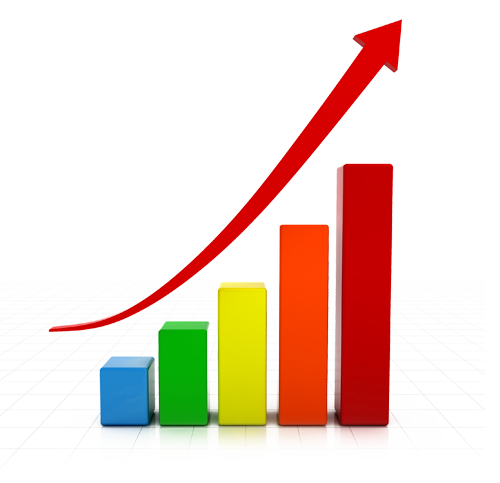Investment Resilience in Times of Crisis: The Nexus of Domestic, Foreign Investment, and Interest Rates on Economic Growth amidst The Covid-19
 Abstract Views:
298 times
Abstract Views:
298 times
 PDF (English) Downloads:
185 times
PDF (English) Downloads:
185 times
Abstrak
This study examines the impact of foreign investment, domestic investment, COVID-19, and interest rates on economic growth across 34 provinces in Indonesia from 2010 to 2023, a period encompassing both pre- and post-pandemic phases. The urgency of this research lies in understanding how these factors have influenced regional economic performance, particularly during the COVID-19 pandemic, which disrupted global and local economies. This study uses a Panel data regression model, fixed-effects, and robust standard errors. The result analysis reveals that the regression model explains that 44.33% of the variation in economic growth can be attributed to domestic and foreign investments; and interest rates. The probability test results show that foreign investment significantly affects economic growth more than domestic investment. Interest rates did not significantly impact economic growth during the COVID-19 period, as indicated by the statistical analysis. It implies that despite its potential role in stabilizing the economy, interest rate policies may have been less effective in fostering growth during the pandemic. These findings highlight the critical role of foreign investment and pandemic-related factors in shaping economic growth dynamics in Indonesia provinces.
##plugins.generic.usageStats.downloads##
Referensi
Akbar, K., Irsad, I., Kembaren, E. T., Tanjung, A. F., & Harahap, A. R. (2022). Dampak Pandemi Covid 19 pada Pertumbuhan Perekonomian Indonesia. Jurnal Agriuma, 4(2), 88–96. https://doi.org/10.31289/agri.v4i2.8247.
Al‐Hallaq, S. S., Athamneh, A. B., & Suleiman, H. M. (2020). The impact of foreign direct investment on the growth of the tourism sector in Jordan (1980–2016). Journal of Public Affairs, 20(2). https://doi.org/10.1002/pa.2005.
Aminda, R. S., & Rinda, R. T. (2019). Analisis Penanaman Modal Asing dan Penanaman Modal Dalam Negeri dan Pengaruhnya terhadap Pertumbuhan Ekonomi (Tahun 2010-2018). Proceeding Seminar Nasional dan Call for Papers 2019 Isu-Isu Riset Bisnis dan Ekonomi di Era Disrupsi: Strategi Publikasi di Jurnal Bereputasi, 103–109.
Ani, K. J., & Onu, C. (2022). Effect of Foreign Direct Investment on Gross National Income In Nigeria, 2006-2017. Independent Journal of Management & Production, 13(1), 056–071. https://doi.org/10.14807/ijmp.v13i1.1484.
Arta, Y. K. (2013). Pengaruh Penanaman Modal Asing (PMA), Penanaman Modal Dalam Negeri (PMDN), dan Angkatan Kerja terhadap Pertumbuhan Ekonomi di Jawa Tengah. Economics Development Analysis Journal, 2(2), 1–8. http://journal.unnes.ac.id/sju/index.php/edaj.
Bank Indonesia. (2023a). Bank Indonesia’s Monetary Policy Response to the COVID-19 Pandemic. https://www.bi.go.id/en/publikasi/ruang-media/news-release/pages/sp_2415922.aspx.
Bank Indonesia. (2023b). BI Rate. https://www.bi.go.id/id/statistik/indikator/bi-rate.aspx.
Bhujabal, P., Sethi, N., & Padhan, P. C. (2024). Effect of institutional quality on FDI inflows in South Asian and Southeast Asian countries. Heliyon, 10(5). https://doi.org/10.1016/j.heliyon.2024.e27060.
Budiono, S., & Purba, J. T. (2023). Factors of Foreign Direct Investment Flows to Indonesia in the Era of COVID-19 Pandemic. Heliyon, 9(4). https://doi.org/10.1016/j.heliyon.2023.e15429.
Central Bureau of Statistics. (2023). https://www.bps.go.id/.
Cheng, W., Dilanchiev, A., Mammadov, E., & Wanjun, S. (2024). The Impact of Natural Resource Extensive on Green Economic Growth Policies. Resources Policy, 92, 104980. https://doi.org/10.1016/j.resourpol.2024.104980.
DJKN Kemenkeu. (2020). Strategi Kebijakan Pemulihan Ekonomi Nasional (PEN). https://www.djkn.kemenkeu.go.id/artikel/baca/13287/strategi-kebijakan-pemulihan-ekonomi-nasional.html.
Durrah, D. F., Cahyandari, R., & Awalluddin, A. S. (2020). Model Regresi Data Panel Terbaik untuk Faktor Penentu Laba Neto Perusahaan Asuransi Umum Syariah di Indonesia. Kubik: Jurnal Publikasi Ilmiah Matematika, 5(1), 28–34. https://doi.org/10.15575/kubik.v5i1.8488.
Ganda, F. (2024). The Influence Of Democracy, Corruption, Economic Growth and ICT on Carbon Emissions in Sub-Saharan African Countries: Does FDI matter? Journal of Open Innovation: Technology, Market, and Complexity, 10(3). https://doi.org/10.1016/j.joitmc.2024.100324.
Georgescu, I., & Kinnunen, J. (2024). Effects of FDI, GDP and energy use on ecological footprint in Finland: An ARDL approach. World Development Sustainability, 4. https://doi.org/10.1016/j.wds.2024.100157.
Gujarati, D. N. (2012). Econometrics by Example. Palgrave Macmillan.
Hariyanti, D., & Soeharjoto, V. (2022). Impact of Monetary Policy on Indonesia’s Economic Growth, Case Studies before and during the Covid-19 Pandemic. Proceedings of the First Lekantara Annual Conference on Public Administration, Literature, Social Sciences, Humanities, and Education, LePALISSHE 2021, August 3, 2021, Malang, Indonesia. https://doi.org/10.4108/eai.3-8-2021.2315159.
Hassan, N. N. N. M., Romli, N., & Aljoefry, M. J. I. (2022). The Effect of Macro Economy Variables on Stock Market Performance During Pandemic. International Journal of Academic Research in Economics and Management Sciences, 11(3). https://doi.org/10.6007/IJAREMS/v11-i3/14695.
Henukh, C., & Atti, A. (2022). Metode Regresi Data Panel untuk Pemodelan Indeks Pembangunan Manusia (IPM) di Provinsi Nusa Tenggara Timur. Jurnal Diferensial, 4(2), 103–113. https://doi.org/10.35508/jd.v4i2.8188.
IMF. (2024). World Economic Outlook 2024. https://www.imf.org/en/Publications/WEO/Issues/2024/10/22/world-economic-outlook-october-2024
Indra, I. (2019). Macro Stress Test Model Risiko Kredit: Studi Empiris Perbankan Konvensional dan Syariah di Indonesia. Jurnal Ekonomi Dan Kebijakan Publik, 9(2), 113–130. https://doi.org/10.22212/jekp.v9i2.1063.
Jui, F. N., Hossain, M. J., Das, A., Sultana, N., & Islam, M. K. (2024). Analyzing the Impact of Remittance, FDI and Inflation Rate on GDP: A comparative study of Bangladesh, Pakistan and Sri-Lanka using VAR and BEKK-GARCH approach. Heliyon, 10(11). https://doi.org/10.1016/j.heliyon.2024.e31381.
Labiaga, J. F., & Karl P. Campos. (2024). Philippine MSMEs after The Covid-19 Pandemic: A Systematic Review of Pandemic Impacts and Coping Strategies. Jurnal Ekonomi Dan Bisnis, 28(1), 13–22. https://doi.org/10.24123/jeb.v28i1.6357.
Magazzino, C., & Mele, M. (2022). Can a change in FDI accelerate GDP growth? Time-series and ANNs evidence on Malta. Journal of Economic Asymmetries, 25. https://doi.org/10.1016/j.jeca.2022.e00243.
Purwanto, H., & Siswahadi, S. (2021). Paradigm Of National Income in Islamic Economy. Syariati: Jurnal Studi Al-Qur’an Dan Hukum, 7(1), 93–102. https://doi.org/10.32699/syariati.v7i1.1851.
R, W. W., Haryono, S., & Tahir, Muh. (2023). Macroeconomic Effect on Sukuk Growth with Inflation as A Moderation Variable. Jurnal Ilmu Keuangan Dan Perbankan (JIKA), 12(2), 223–234. https://doi.org/10.34010/jika.v12i2.6119.
Rahmadeni, R., & Nurjannah, N. (2022). Model Tingkat Kemiskinan di Kabupaten/Kota Provinsi Riau: Menggunakan Regresi Data Panel. KUBIK: Jurnal Publikasi Ilmiah Matematika, 6(2), 98–109. https://doi.org/10.15575/kubik.v6i2.13598.
Raphael, M., & Carlos, T. (2024). Analyzing Factors Affecting Economic Growth and Evaluating The Macroeconomic Model in Zambia. Флагман Науки, 11(11). https://doi.org/10.37539/2949-1991.2023.11.11.011.
Rawat, B. (2012). Impact of FDI on India’s GDP: An Inter-Comparative Study Between USA, UK and Japan. In Transnational Corporations Review (Vol. 4, Issue 3). www.tnc-online.net.
Rizky, R. L., Agustin, G., & Mukhlis, I. (2016). Pengaruh Penanaman Modal Asing, Penanaman Modal Dalam Negeri dan Belanja Modal Terhadap Pertumbuhan Ekonomi Provinsi di Indonesia. JESP, 8(1), 9–16.
Saragih, C. A. M., Haryadi, H., & Emilia, E. (2021). Pengaruh Produk Domestik Bruto, Suku Bunga, dan Inflasi terhadap Foreign Direct Investment di Indonesia Periode 2000-2017. Jurnal Ekonomi Aktual, 1(1), 35–44. https://doi.org/10.53867/jea.v1i1.4
Sebayang, J., Albar Tanjung, A., & Sukardi, S. (2022). Monetary Policy and Innovation During Recession in Indonesia. Jurnal Ekonomi Pembangunan, 20(01), 21–33. https://doi.org/10.22219/jep.v20i01.18896.
Siregar, R. P., Tanjung, A. A., & Syafii, M. (2023). Analysis of Monetary Policy Mechanism Through Interest Rate Path to Stock Market (IHSG) in Indonesia. International Journal of Research and Review, 10(1), 284–303. https://doi.org/10.52403/ijrr.20230132.
Susanto, S. (2018). Pengaruh Inflasi, Tingkat Suku Bunga, dan Nilai Tukar terhadap Pertumbuhan Ekonomi Indonesia. JEBI | Jurnal Ekonomi Bisnis Indonesia, 12(01), 52–68. https://doi.org/10.36310/jebi.v12i01.27.
Wihda, B. M., & Poerwono, D. (2014). Analisis Pengaruh Penanaman Modal dalam Negeri (PMDN), Penanaman Modal Asing (PMA), Pengeluaran Pemerintah dan Tenaga Kerja terhadap Pertumbuhan Ekonomi di Yogyakarta (Tahun 1996–2012). Diponegoro Journal of Economics, 3(1), 210–221. http://ejournal-s1.undip.ac.id/index.php/jme.
Yasmin. (2023). Analisis Pertumbuhan Ekonomi Melalui Jalur Transmisi Current Account dan Capital Inflow di Indonesia. Jurnal Ilmiah Ekonomi Bisnis, 28(1), 25–41. https://doi.org/10.35760/eb.2023.v28i1.6624.
Zahara, E. L., & Octavia, E. (2021). Perkembangan PMDN dan PMA di Indonesia Tahun 2016-2020.
Zhao, J., & Lee, S.-Y. (2024). Key Factors Affecting Sustainable Economic Growth in the New Normal Era: An Empirical Analysis of Country Data. Journal of Korea Trade, 28(3), 47–69. https://doi.org/10.35611/jkt.2024.28.3.47.
Zhorayev, O., & He, H. (2022). Macroeconomic, Political and Institutional Factors of Economic Growth. Economics: The Strategy and Practice, 17(2), 190–205. https://doi.org/10.51176/1997-9967-2022-2-190-205.

 DOI:
DOI:


